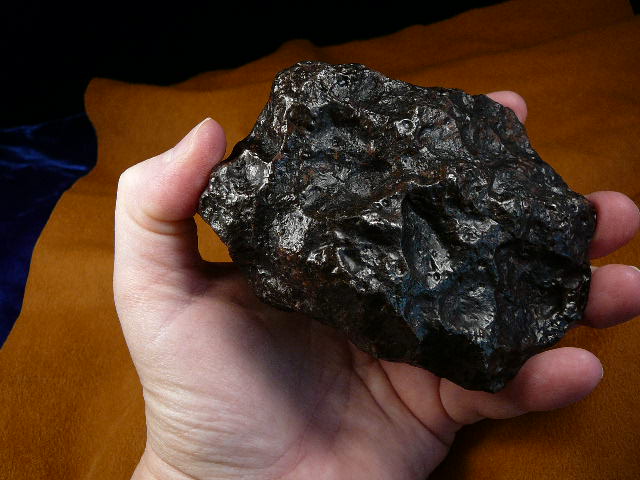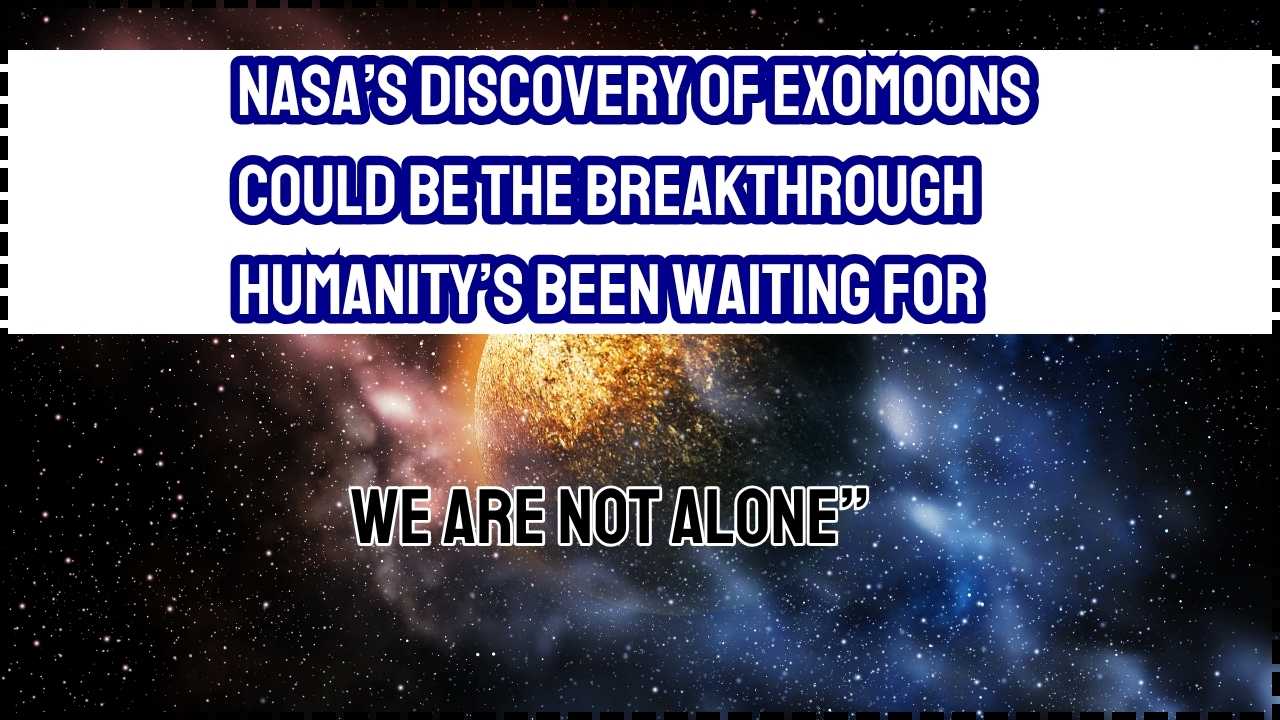
This Man’s Mysterious Rock: If you’re wandering through nature with a metal detector slung over your shoulder, you’re probably dreaming of striking gold. That’s exactly what Australian hobbyist David Hole hoped for in 2015 while exploring Maryborough Regional Park, a historic site once bustling during the gold rush era in Victoria, Australia.
But what David found was no ordinary rock. It wasn’t gold. It wasn’t platinum. It wasn’t even from Earth. Instead, his unusual, super-heavy find turned out to be a 4.6-billion-year-old meteorite, a relic from the earliest days of our solar system—making it far more valuable than any precious metal.
This Man’s Mysterious Rock
David Hole thought he’d struck gold. Instead, he stumbled upon something older than Earth itself—a meteorite that spent billions of years drifting through space before crashing into Australia. What began as a curious backyard find turned into a scientific breakthrough, offering researchers a rare look into the building blocks of planets. Whether you’re a seasoned geologist or just someone with a metal detector and a dream, remember: sometimes, the greatest treasures don’t sparkle—they tell stories from the stars.
| Topic | Details |
|---|---|
| Name | Maryborough Meteorite |
| Found By | David Hole |
| Year of Discovery | 2015 |
| Location | Maryborough Regional Park, Victoria, Australia |
| Type | H5 Ordinary Chondrite |
| Weight | 17 kg (37.5 lbs) |
| Age | Estimated 4.6 billion years |
| Composition | Iron, nickel, chondrules |
| Official Analysis | Melbourne Museum |
| Number of Meteorites in Victoria | Only 17 recorded finds |
| Learn More | Museums Victoria |
A Meteorite That Defied Tools, Time, and Expectations
When David found the rock, it stood out right away—it was unusually heavy for its size, reddish in color, and oddly shaped. He tried to cut it open with a saw, drill it, even douse it in acid. Nothing worked. The rock was stubborn, and now we know why: it wasn’t just a rock—it was a space-hardened meteorite.
Years later, still baffled by the object, David brought it to the Melbourne Museum, where experts Dermot Henry and Dr. Bill Birch confirmed what no one suspected: this was a rare H5 chondritic meteorite, formed over 4 billion years ago in the asteroid belt between Mars and Jupiter.
Dermot Henry, who has examined thousands of Earth rocks over his decades-long career, said:
“I’ve looked at a lot of rocks that people think are meteorites. This one really stood out. It had all the hallmarks—metallic, dense, fusion crust.”

What Is an H5 Chondrite Meteorite?
To understand the value of David’s find, you need to know a little about meteorite classification.
Chondrites are a type of stony meteorite that haven’t changed much since they formed. They contain chondrules—tiny, spherical particles formed in the early solar system from molten droplets.
The “H” in H5 means it contains high levels of iron, and the “5” means it has experienced moderate heat in space, altering its mineral structure but not melting it completely.
These meteorites are:
- Composed of iron, nickel, and silicates
- Among the oldest materials in the solar system
- Prized for their scientific value, especially for understanding planetary formation
Why This Man’s Mysterious Rock Was Worth More Than Gold or Platinum?
Let’s put things into perspective. As of mid-2025:
- Gold trades at approximately $2,300 USD per ounce
- Platinum hovers around $1,000 USD per ounce
But meteorites, especially rare ones like chondrites, can be virtually priceless to scientists and collectors. Some chondrites sell for $50 to over $1,000 per gram, depending on composition, condition, and rarity. A 17-kilogram meteorite like David’s? Easily tens of thousands of dollars, and likely much more to institutions.
However, the true value lies in its history, not its price tag. Meteorites like this serve as cosmic time capsules that reveal what the solar system was made of before Earth even existed.
How Scientists Analyze Meteorites?
At the Melbourne Museum, researchers followed a rigorous process to confirm the rock’s cosmic origin:
- Visual Inspection – They observed the dense metal and fusion crust.
- X-ray Fluorescence (XRF) – Used to determine the elemental composition.
- Scanning Electron Microscopy (SEM) – Revealed microscopic chondrules and mineral textures.
- Mass Spectrometry – Helped estimate its age and trace its formation to the early solar system.
This is not just “space stuff.” This is billions of years of untouched science.

Other Famous Meteorite Discoveries for Comparison
| Name | Location | Age | Notable Facts |
|---|---|---|---|
| Hoba | Namibia | Unknown | Largest meteorite ever found on Earth (60 tonnes) |
| Allende | Mexico | 4.6 billion years | Contains rare pre-solar grains |
| Willamette | Oregon, USA | Unknown | Largest meteorite found in the United States |
| Fukang | China | 4.5 billion years | Stunning pallasite with gemstone-like olivine crystals |
These historic meteorites have fetched millions at auctions or found homes in major museums, showcasing just how significant these space rocks can be.
How to Identify a Meteorite: Practical Guide
Think you’ve found a meteorite? Here’s how to tell:
1. Weight: Meteorites are much heavier than normal rocks due to high iron content.
2. Magnetism: Most are magnetic. A simple fridge magnet will often stick.
3. Fusion Crust: A thin, black, burnt-looking layer from atmospheric entry.
4. Chondrules or Metal Flakes: Tiny metallic or spherical inclusions visible if cracked.
5. No Quartz: Quartz and bubbly patterns suggest Earth origin.
Legal and Ethical Considerations
Ownership laws vary around the world:
- Australia: Meteorites are generally considered property of the Crown or the state. Finds must be reported.
- United States: If found on private land, you may keep or sell it. On federal land, meteorites belong to the government.
- Europe and Asia: Laws vary greatly. Always check local regulations before searching or selling.
Remember: failing to report a significant find could result in legal trouble, especially if it’s from protected land.
How to Store and Preserve a Meteorite
Once verified, proper care is essential. Here’s how to do it:
- Keep it dry: Moisture causes rust in iron meteorites.
- Store in airtight cases: Use silica gel packs to control humidity.
- Avoid cleaning with harsh chemicals: Gentle brushing is best.
- Label the specimen: Include find location, date, and initial weight.
If well-preserved, meteorites maintain their value and can be resold or donated to museums or research facilities.
Making a Career from Meteorite Hunting
Believe it or not, meteorite hunting can be both a hobby and a side hustle. Professional hunters use:
- Metal detectors and GPS tracking
- Desert or dry lake beds (ideal because meteorites stand out on flat, light surfaces)
- Satellite imagery to locate impact zones
Some high-end meteorites—especially those from the Moon or Mars—can sell for over $1,000 per gram. That’s serious money.
But be aware: you’ll need permits, legal knowledge, and a whole lot of patience. It’s not a get-rich-quick game.
How Rare Are Meteorites?
According to NASA, roughly 48.5 tons of meteor material enters Earth’s atmosphere each day, but most burn up before reaching the ground. Only about 17,000 meteorites have been found and classified worldwide.
In Victoria, Australia, where David found his meteorite, only 17 verified meteorites have ever been documented. That makes the Maryborough Meteorite incredibly rare—and a truly once-in-a-lifetime find.
Neither Glitch Nor Myth: The Strange Case of Vostok Island’s Disappearance on Google Maps
Nevada Just Struck ‘White Gold’—The Shocking Discovery That Could Fuel the Nation











